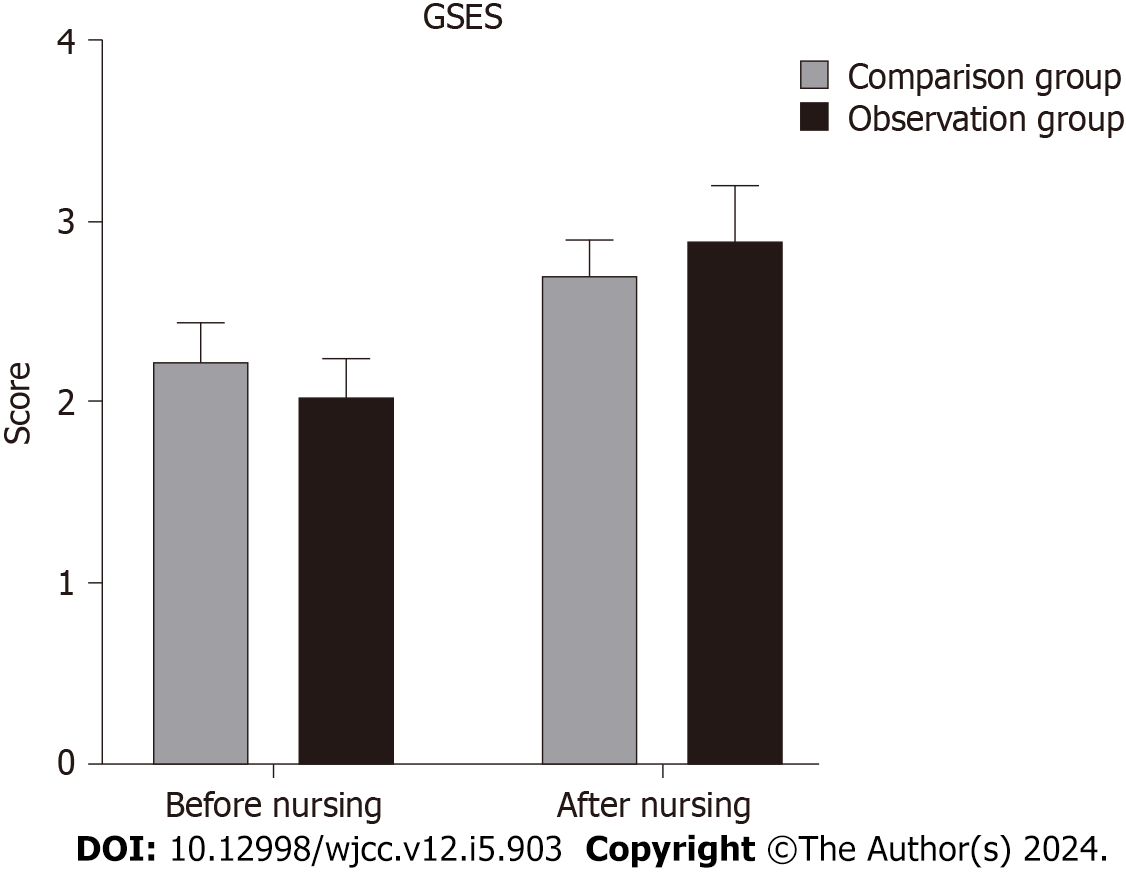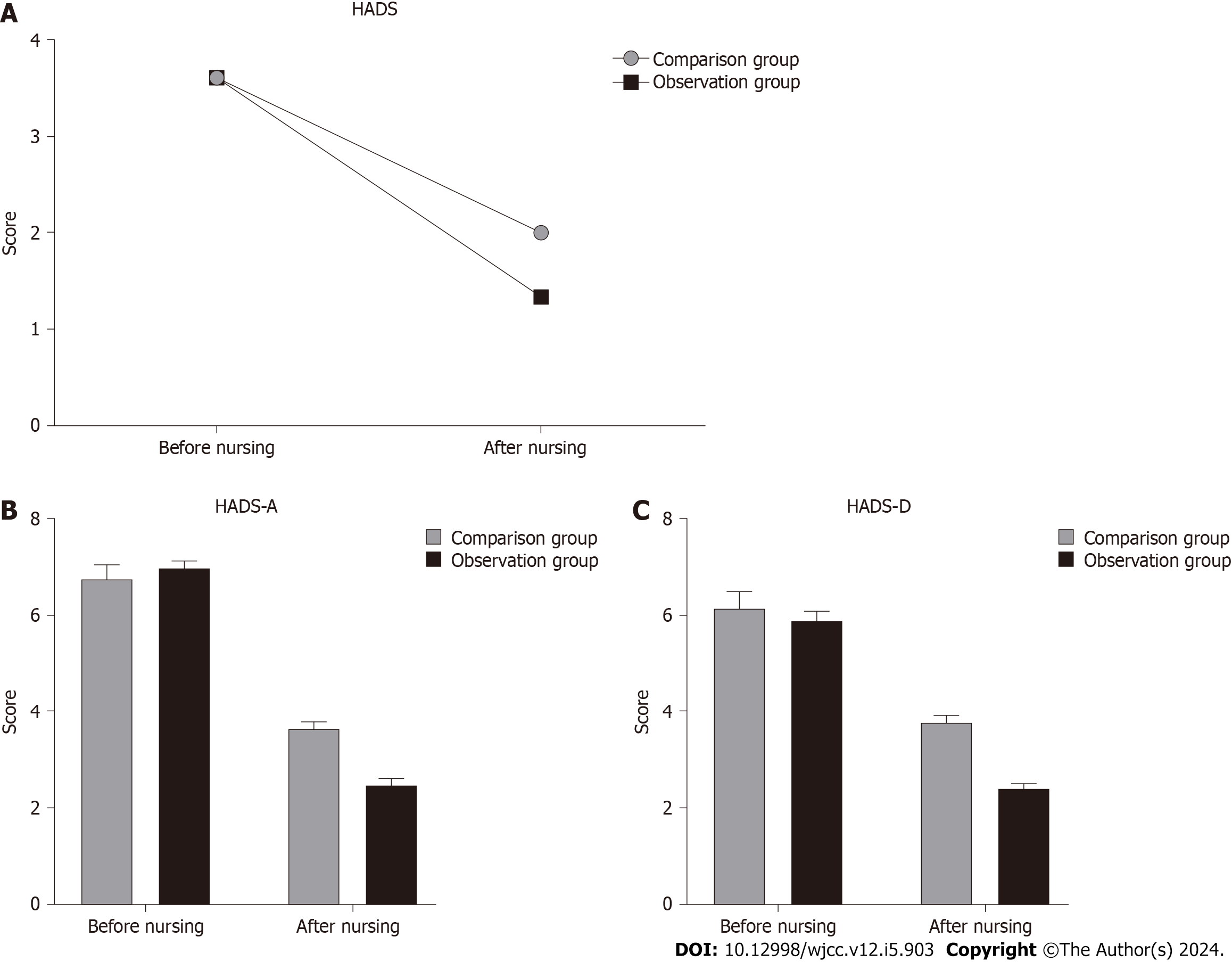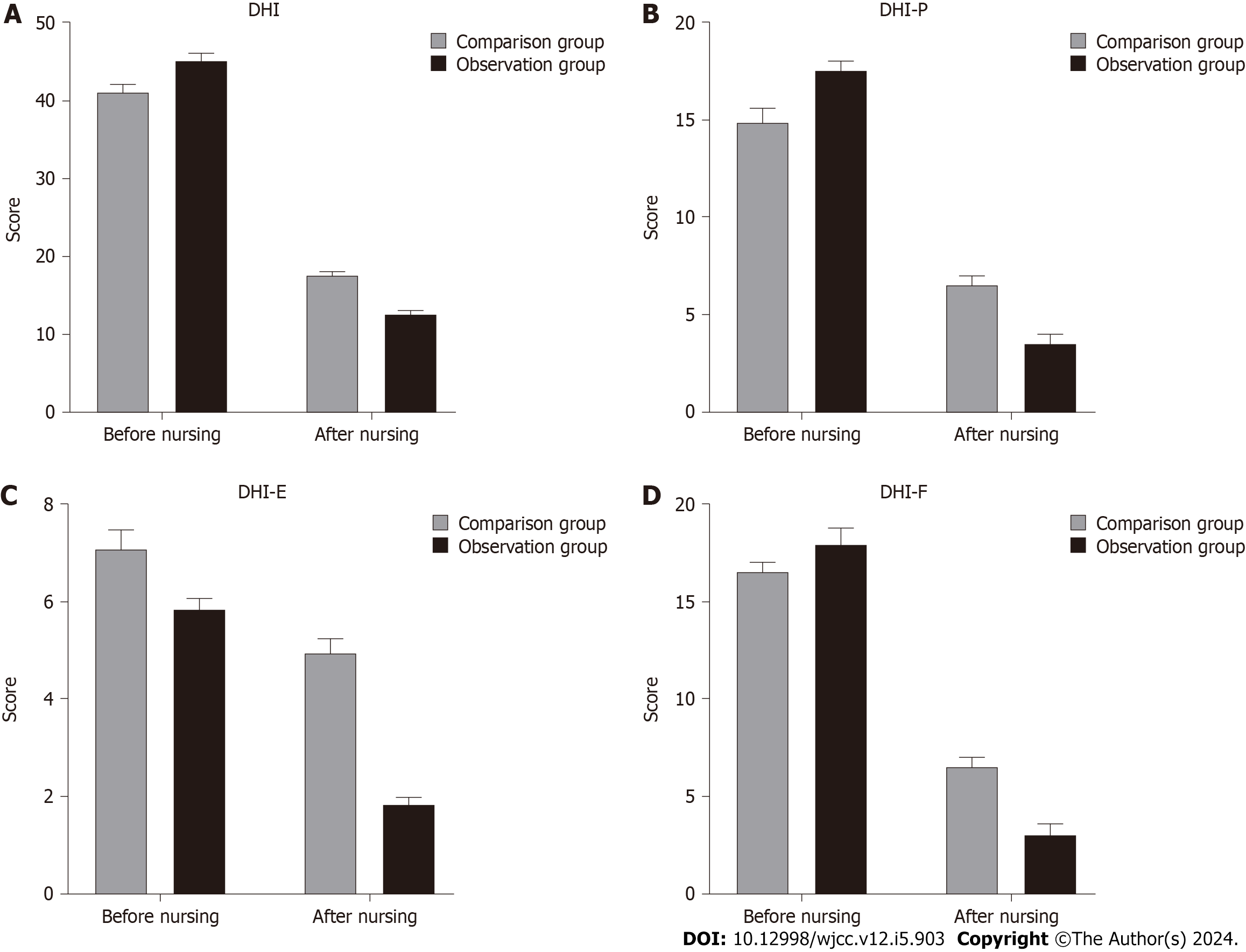Copyright
©The Author(s) 2024.
World J Clin Cases. Feb 16, 2024; 12(5): 903-912
Published online Feb 16, 2024. doi: 10.12998/wjcc.v12.i5.903
Published online Feb 16, 2024. doi: 10.12998/wjcc.v12.i5.903
Figure 1 Self-efficacy comparison (all self-efficacy data in our study were checked by Excel double entry, SPSS 23.
0 was used for statistical analysis, and the mean ± SD was used for description. Using t test, it was found that there was no significant difference in the General Self-Efficacy Scale (GSES) score between the two groups of patients before nursing (P > 0.05), with comparability; the GSES scale scores of the two groups of patients after nursing were higher than those before nursing, and the comparison of the GSES scale scores of the two groups after nursing showed that the nursing group was higher than the control group, and the difference was statistically significant (P < 0.05). GSES: General Self-Efficacy Scale.
Figure 2 Anxiety and depression comparison.
A: Hospital Anxiety and Depression Scale (HADS) scores in the comparison group and observation group; B: Hospital Anxiety and Depression Scale-anxiety (HADS-A) scores in the comparison group and observation group; C: Hospital Anxiety and Depression Scale- depression (HADS-D) scores in the comparison group and observation group. All anxiety and depression data in our study were checked by Excel double entry, SPSS 23.0 was used for statistical analysis, and the mean ± SD was used for description. The t test found that the scores of the HADS scale and anxiety and depression subscale scores of the two groups of patients before nursing were compared, the difference was not statistically significant (P > 0.05). After nursing, the HADS score, HADS-A and HADS-D subscale scores of the two groups of patients were lower than those before nursing, and the nursing group was lower than the control group, and the difference was statistically significant (P < 0.05).
Figure 3 Quality of life comparison.
A: Dizziness Handicap Inventory (DHI) scores in the comparison group and observation group; B: DHI-P scores in the comparison group and observation group; C: DHI-E scores in the comparison group and observation group; D: DHI-F scores in the comparison group and observation group. All quality of life data in our study were checked by Excel double entry, SPSS23.0 was used for statistical analysis, and the mean ± SD was used for description. Using t test, it was found that the total score of DHI scale, DHI-P, DHI-E of the two groups of patients before nursing Compared with DHI-F dimension score, the difference was not statistically significant (P > 0.05). After nursing, the DHI scale and DHI-P, DHI-E and DHI-F scores in the two groups were decreased, and the scores in the nursing group were lower than those in the control group, and the difference was statistically significant (P < 0.05).
- Citation: Shi Q, Wu RJ, Liu J. Effect of health education based on information-motivation-behavioral skills model on patients with unilateral vestibular dysfunction. World J Clin Cases 2024; 12(5): 903-912
- URL: https://www.wjgnet.com/2307-8960/full/v12/i5/903.htm
- DOI: https://dx.doi.org/10.12998/wjcc.v12.i5.903











